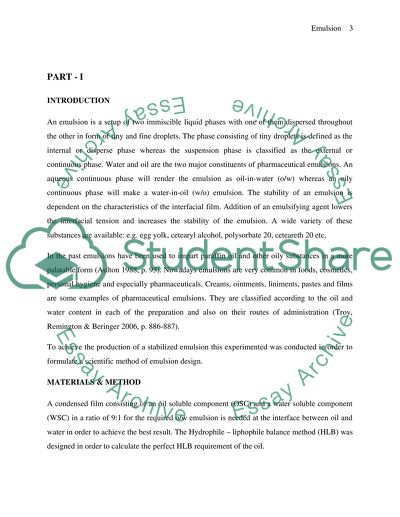Cite this document
(“Emulsion Technology Lab Report Example | Topics and Well Written Essays - 1250 words”, n.d.)
Emulsion Technology Lab Report Example | Topics and Well Written Essays - 1250 words. Retrieved from https://studentshare.org/chemistry/1434136-emulsion-technology
Emulsion Technology Lab Report Example | Topics and Well Written Essays - 1250 words. Retrieved from https://studentshare.org/chemistry/1434136-emulsion-technology
(Emulsion Technology Lab Report Example | Topics and Well Written Essays - 1250 Words)
Emulsion Technology Lab Report Example | Topics and Well Written Essays - 1250 Words. https://studentshare.org/chemistry/1434136-emulsion-technology.
Emulsion Technology Lab Report Example | Topics and Well Written Essays - 1250 Words. https://studentshare.org/chemistry/1434136-emulsion-technology.
“Emulsion Technology Lab Report Example | Topics and Well Written Essays - 1250 Words”, n.d. https://studentshare.org/chemistry/1434136-emulsion-technology.


